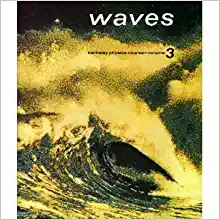Question
Objective : The objective of this activity is to to understand the concepts of half-life and randomness using a penny simulation. Equipment and Supplies :
Objective:
The objective of this activity is to to understand the concepts of half-life and randomness using a penny simulation.
Equipment and Supplies:
256 pennies and a large container to shake them in.
General note:
Pay attention to the two graphs you will make in this activity as they are a large portion of your score. They are very different kinds of graphs. Be sure to label the axes in both graphs.
Procedure for Part 1: Decay of 256 atoms
Imagine that your pennies represent 256 atoms that have a half-life of one year. Put 256 pennies in a container and shake them up. Toss the pennies onto the floor. Count the number of pennies that are heads and the number that are tails. If a coin comes up tails, it represents the decay of that atom so we remove the penny from the group. Each toss represents one year passing.
After removing the decayed atoms, toss them again and repeat the process until your entire sample has decayed. Record the number of remaining atoms after each step. Make a graph of the number of un-decayed atoms vs. the number of years. Label your axes.
Graph showing the number of un-decayed pennies vs. year, with 256 pennies at year zero. Be sure to label your axes and mark the scale:
Questions and discussion:
1.How many pennies would you have predicted would be left after the third year? How many did you actually get after three years? Can you account for any difference?
2.How many years would you have predicted it would take for all the pennies to be gone? How many did it actually take? Can you account for any difference?
Procedure for Part 2: Decay of 4 atoms
Take 4 pennies and repeat a similar experiment 20 times. This time you will only need to record the how many "years" it takes for all the atoms to decay
Make a histogram of the number of tosses it takes to fully decay. This means the horizontal axis should be labeled "number of years to decay completely" and the vertical axis should show how many times (out of your 20 runs) that was the time it took to decay. Label your axes. You may not have made this kind of plot before, so follow the directions carefully or look at online resources about histograms.
Histogram showing how often it takes for all four pennies to decay:
Questions and discussion:
3. From your histogram, how can you tell what the most likely number of years to totally decay was? What would the theoretical value for this be? Compare the two.
4.The process we are modeling here is inherently random. If you were to redo your 20 runs, what features of the histogram would likely stay the same? What features might change?
Step by Step Solution
There are 3 Steps involved in it
Step: 1

Get Instant Access to Expert-Tailored Solutions
See step-by-step solutions with expert insights and AI powered tools for academic success
Step: 2

Step: 3

Ace Your Homework with AI
Get the answers you need in no time with our AI-driven, step-by-step assistance
Get Started


